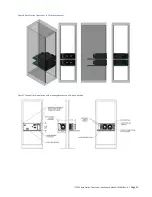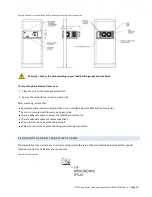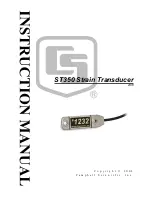
ITC 220 Base Station Transceiver Installation Guide PN 133991 Rev. A
| Page 1
1
OVERVIEW
This
ITC 220 Base Station Transceiver Installation Guide
provides important electrical safety and radio-frequency
compliance information, operation and routine maintenance instructions, and installation and troubleshooting
procedures for CalAmp ITC 220 Base Station Transceivers.
This manual provides essential information for personnel who perform the following on the Base Station
Transceiver:
Operation and routine maintenance (Chapters 1–5; Appendix A)
Installation and verification of operation (Chapters 1–6; Appendices A–C)
Advanced troubleshooting and verification of equipment settings (Chapters 1–7; Appendices A–J)
Prerequisites for users of this manual who perform the above include:
Ability to work with standard radio-frequency (RF) test equipment, including knowledge of how to prevent personal
injury and equipment damage.
Ability to measure RF power, frequency, and other quantities, and analyze RF performance.
Working knowledge of the XtermW terminal emulation application that is used to configure and install updates in
the radio transceivers.
Familiarity with means to limit RF exposure from antennas and familiarity with the
RF Energy Exposure Guide for ITC
220 Base Station, Locomotive, and Wayside Transceivers Installed in Vehicles or at Fixed Sites
.
1.1
GENERAL DESCRIPTION
Positive Train Control (PTC) is a technology solution that prevents train-to-train collisions, over-speed derailments,
movement of a train through a switch left in the wrong position, and incursion of trains into maintenance of way work
limits. Interoperable Train Control (ITC) defines industry-standard messaging and communication protocols that
support PTC and ensure interoperability between components.
CalAmp’s line of ITC 220 Radio Transceivers for locomotive, base station, and wayside applications are manufactured
specifically for use by North American Railroads for PTC applications. Operating between 217.6 and 222 MHz, these
multi-channel software-defined radio transceivers meet railroad requirements for ITC and are designed to meet
relevant railroad specifications for operation in the harshest environments. With high power capacity, CalAmp’s ITC
220 Radio Transceivers provide wireless packet data transport between locomotives, base stations, and wayside
locations.
Base Station Transceivers are installed at fixed locations and provide RF connectivity between back office and remote
applications. The backhaul between the Base radio transceiver and the Back Office is typically in the range of 56 kbps to
1 Mbps. Base Station Transceivers provide radio coverage to all wayside and operational locomotive transceivers in the
system. The Base Station Transceiver, Locomotive Transceiver, and Wayside Transceiver form the transportation
backbone on which a messaging application provides communication capabilities between railroad assets and their
back offices.
Experience the advantage of high performance reliability designed to meet:
AAR Standard S-5702
ANSI/TIA-603-C-2004
MIL-STD-810E
American Recovery and Reinvestment Act – Buy American Provision








































